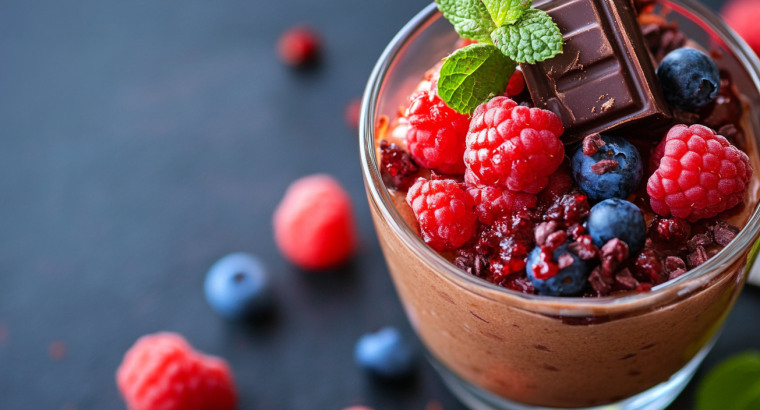Understanding Diabetes and Sugary Treats
How to Enjoy Desserts on a Diabetic Diet
Diabetes shouldn’t mean missing out on desserts. In fact, with careful planning and smart ingredient choices, enjoying sweet treats can easily fit into a diabetic-friendly lifestyle. Whether you are craving a piece of cake, luscious brownies, or simple cookies, there are numerous ways to enjoy desserts without compromising on your health. This guide aims to help you navigate desserts as a diabetic, uncovering tips, recipes, and strategies for indulging your sweet tooth responsibly.
Understanding Diabetes and Sugary Treats
Before diving into dessert options, it’s vital to understand how diabetes impacts your body’s ability to process sugars. Diabetes impairs insulin function, resulting in challenging blood sugar management. That’s why it’s crucial for diabetics to keep track of carbohydrate intake, including sugars found in desserts.
Carbohydrates and Sugar in Desserts
Carbs in desserts primarily come from sugars and refined flours, both of which can cause rapid spikes in blood glucose levels. Therefore, it is essential for diabetics to monitor their carbohydrate consumption closely to prevent spikes and maintain a stable blood sugar level.
Glycemic Index and Load
The glycemic index (GI) scores foods based on how quickly they raise blood sugar. Foods with a high GI, like white bread and sugary desserts, can lead to sharp spikes, while those with a low GI, like whole grains and certain fruits, have a subtler impact. The glycemic load (GL) also considers portion size, providing a more accurate representation of a food’s impact on your blood sugar.
Tips for Enjoying Diabetic-Friendly Desserts
Here’s how to incorporate desserts into a diabetic-friendly diet without disrupting your blood sugar control.
1. Choose Sugar Substitutes Wisely
Opt for sugar substitutes that affect blood glucose minimally, such as:
- Stevia: A natural sweetener from the Stevia plant, it’s about 200 times sweeter than sugar but has no calories or carbs.
- Erythritol: A sugar alcohol with a similar sweetness level to sugar, and it does not significantly impact blood sugar.
- Xylitol and Monk Fruit: Both are natural alternatives with low calories and minimal effect on blood glucose levels.
2. Focus on Portion Control
Even ‘diabetic-friendly’ desserts can disrupt blood sugar control if consumed in large quantities. Practicing portion control is crucial to enjoying desserts safely. Start with small servings and adjust based on your body’s response.
3. Integrate Fiber and Protein
Consider desserts that integrate high-fiber or high-protein ingredients. They not only help in better managing blood sugar but also improve satiety. Additions like nuts, seeds, whole grains, or lentils can be great ways to increase protein and fiber in your desserts.
4. Opt for Whole, Real Ingredients
Whenever possible, choose whole-food ingredients that are naturally nutrient-rich and low in sugar. These could include:
- Fruits: Opt for berries, apples, or pears for their lower GI scores.
- Nuts and Seeds: Excellent for adding protein and healthy fats.
- Whole Grains: Use oats, quinoa, or whole-grain flours as a healthier base.
5. Avoid Hidden Sugars
Processed desserts often contain hidden sugars. Avoid products labeled with high-fructose corn syrup, sucrose, or other added sugars. Familiarizing yourself with these terms is crucial for making informed choices.
Diabetic-Friendly Dessert Recipes
To help you start enjoying desserts again, here are some delicious and easy-to-make recipes that cater to diabetic dietary needs without compromising on taste.
Berry Chia Pudding
Ingredients:
- 1/4 cup chia seeds
- 1 cup unsweetened almond milk
- 1 tsp vanilla extract
- Stevia, to taste
- 1/2 cup mixed berries
Instructions:
- In a bowl, mix chia seeds, almond milk, and vanilla extract.
- Sweeten with Stevia to taste.
- Stir well and refrigerate overnight.
- Top with fresh mixed berries before serving.
Almond Flour Brownies
Ingredients:
- 1 cup almond flour
- 1/2 cup unsweetened cocoa powder
- 1/2 cup erythritol
- 1/4 cup unsalted butter, melted
- 3 large eggs
- 1 tsp vanilla extract
- 1/2 tsp baking powder
- 1/4 tsp salt
Instructions:
- Preheat oven to 350°F (175°C) and grease an 8×8 inch pan.
- In a bowl, mix almond flour, cocoa powder, erythritol, baking powder, and salt.
- In another bowl, whisk eggs, melted butter, and vanilla extract.
- Combine the wet and dry mixtures until smooth.
- Pour batter into prepared pan and bake for 25-30 minutes, or until set.
- Allow to cool before slicing and serving.
No-Bake Peanut Butter Cookies
Ingredients:
- 1 cup unsalted peanut butter
- 2/3 cup erythritol
- 1/2 cup rolled oats
- 1 tsp vanilla extract
Instructions:
- In a bowl, mix peanut butter, erythritol, rolled oats, and vanilla extract until well combined.
- Spoon mixture onto parchment paper and shape into cookies.
- Refrigerate for at least 30 minutes before serving.
Strategies for Dining Out
Dining out can pose challenges, with limited knowledge of dishes prepared behind the scenes. However, following these strategies can help you indulge in occasional treats responsibly:
– Check the Menu in Advance
Most eateries provide online menus that include nutritional information. Use this advantage to plan your meal even before reaching the restaurant.
– Communicate Your Needs
Never feel shy to communicate dietary needs with your server. They might offer suggestions or adjust items to fit your requirements.
– Share Desserts
Enjoying a dessert with a companion can help control portion sizes and may lead to enjoyable shared experiences.
Conclusion
Diabetes doesn’t mean you have to permanently delete desserts from your menu. With mindful choices, appropriate sugar substitutes, and attention to portion sizes, you can enjoy satisfying treats without sacrifice. By incorporating the strategies and recipes provided here, you can create balanced, delicious desserts that respect your health commitments.
Remember, when modifying your diet or treatments, it’s essential to consult with healthcare providers to consider all aspects of your health and dietary needs.

